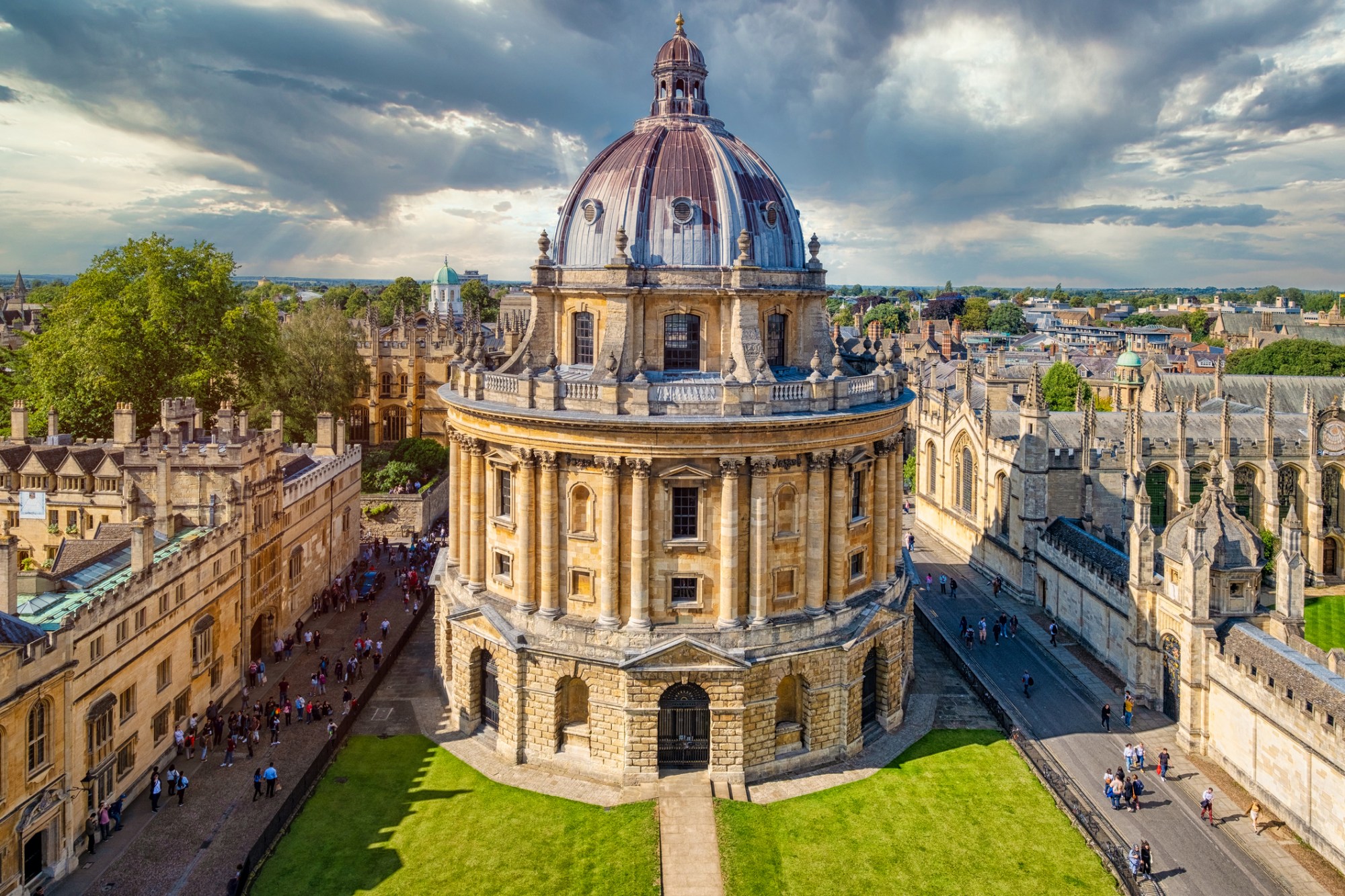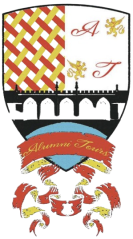Oxford University

“I wonder anyone does anything at Oxford but dream and remember.”
William Yeats
University
No one is entirely sure when the University of Oxford was founded, but there is evidence of teaching in Oxford as early as 1096, making Oxford the oldest university in the English-speaking word. The University experienced huge growth from 1167 when Henry II, the King of England, forbade English students from studying at the University of Paris.
Today, Oxford University is comprised of libraries, museums, administrative centres, and more than 100 academic departments overseen by four academic divisions: Medical Sciences, Physical and Life Sciences, Mathematics, and Humanities & Social Science. Although there are several noteworthy University buildings throughout the city of Oxford (such as the Bodleian Library, the Sheldonian Theatre, and the Museum of Natural History), there is no central campus. Most of the student experience of Oxford is filtered through the lens of a college, which operate largely independently of the central university.
Almost every student and academic at Oxford has a college. These are microcosms of the University, academic communities in which students live, learn, eat extravagant dinners, and engage in outrageous traditions. Oxford has 39 colleges and 6 permanent private halls (PPHs). Functionally, a PPH is the same as a college, the major difference is that PPHs were established by Christian denominations and their governance is still administered by those denominations, rather than by the academic fellows who govern colleges.
Prospective undergraduates apply directly to colleges, they interview for a place with the college rather than the university, they live in college and take their tutorials (small group teaching) in the college. If students play sports, students will likely play sport for their college, only the most athletic are selected to compete for the university. For most undergraduates, the only interactions they will have with the central university will be their lectures and perhaps attending a library.
I did not make it to Oxford until starting my master’s degree and the process is a bit different for postgraduates. As a postgraduate, you apply directly to the university, and it is the university which decides whether to admit you. After admittance you will be assigned a college and although you can indicate a college of preference, it is not as impactful. For postgrads, living in college is optional and teaching takes place directly within the department. College becomes more of a social hub, albeit with the resources for students to live and study within the college walls, should they wish to do so.
The federal structure of Oxford means that baffled tourists asking, “where is the university?” is a common sound around the city. Of course, in a sense, most of the city is a part of the university, either because it is a university building, a college building, or property owned by a college which is leased out to businesses or private individuals.
Bodleian Library
The Bodleian Library (which is, in fact, three libraries: The Old Bodleian Library, the Radcliffe Camera, and the Weston Library) are the federal library for the University, and where much of the administrative work of the university takes place.
The Bodleian Library is the second largest library in the UK (after the British Library in London) and is a legal deposit library, meaning it is entitled to a copy of every book published in the United Kingdom.
The Old Bod opened in 1602 when Thomas Bodley appointed a librarian for his personal collection of books (around 2,500). The “Schools Quadrangle” (which is usually referred to as the Old Bod) was built after Bodley’s death in 1613. It was designed by Thomas Holt.
The New Bodleian Library, now called the Weston Library, was built between 1937 and 1940. It was designed by Gilbert Giles Scott, who is most famous for designing the red telephone box.
Sheldonian Theatre & Divinity School
On the same square as the Old Bod are the Sheldonian Theatre and the Divinity School. The Divinity School, accessed via the School’s Quad, was built for the study of theology. It contains extremely elaborate vaulting, filled with beautiful characters emblematic of the building’s financial backers. It is also where graduating students gather before walking over to the Sheldonian Theatre in order to graduate.
My own graduation was unfortunately cancelled due to a certain virus which must not be named, but I was fortunate enough to experience matriculation at the Sheldonian. Walking into the chamber dressed in our robes, we were sat in rows based on our college and degree. At this point the vice-chancellor and an unidentified man who I later learned to be the Dean of Degrees, had a brief conversation in Latin. No translation was provided, but we had been welcomed to Oxford as formal members of the university!
Magdalen College
Magdalen College, pronounced like “maudlin” is perhaps the college which is most emblematic of the grandeur of the city. Founded in 1458 by William of Waynfleet, Magdalen Tower looms over the Highstreet and Cherwell. From the top of the tower, by tradition which dates back more than 500 years to Henry VII, on May Morning at 6 AM, the choir serenades the city. There was no interruption for the pandemic either, as the choir was broadcast live over Zoom for all to enjoy.
Contained within its walls is its own deer park. Deer have been cultivated within the college grounds since the 1720s and each venison is enjoyed at the Restoration Dinner on 25 October.
Notable alumni include cardinal Thomas Wolsey, the Dragon King of Bhutan Jigme Wangchuck, the poet Oscar Wilde, the composer Baron Andrew Lloyd-Weber, and physicist Erwin Schroedinger.
Christchurch College
Outside of Westminster, they may be no building in England more associated with political power than Christchurch College. To date, Britain has had 55 prime ministers. Of those 28 were educated at Oxford (and another 14 at Cambridge) and of those 28, 13 attended Christchurch (including 9 who attended Eton College and Christchurch).
Christchurch College was initially founded in 1525 by Cardinal Thomas Wolsey as Christ College, but Wolsey died prior to the college’s completion – some say he was poisoned by King Henry VII. Henry re-founded the college in 1546 which now boasts the largest quadrangle in Oxford and a chapel which was designed by Christopher Wren (most famous for designing St. Paul’s Catherdral in London). The college’s Great Dining Hall is another impressive building, serving not only as the seat of the Royalist Parliament during the English Civil War, but as the filming location for the Great Hall of Hogwarts in the Harry Potter films.
With such a grandiose history, it is little wonder that Christchurch is the most visited college in Oxford, with more than half a million visitors annually.
Aside from 13 Britisih Prime Ministers, the college also boasts among its alumni author W.H. Auden, political theorist John Locke, and scientist Robert Hooke. Albert Einstein served briefly as a research fellow of the college.
St John’s College
St. John’s is the richest of all the Oxford colleges. It’s investment portfolio contains much of the city of Oxford, apartment blocks in Berlin, and Milwall F.C. training ground. Located on St. Giles in the city centre, the college was founded to provide the education of Roman Catholic clerics in 1555. In the 20th century, a student society formed out of St. John’s dedicated to the destruction of nearby Keble College. The students, furious at Keble’s brick façade, which they believed to be an afront to Oxford’s stone
Notably alumni include the poet A.E. Housman, the former Thai Prime Minister Abhisit Vejjajiva, and former British Prime Minister Tony Blair.
All Souls College
Looping back around almost to where we started, All Souls College looms elegantly over central Oxford. This is perhaps the most prestigious college in Oxford, and it is certainly the most unusual. To begin with, it admits no undergraduates. While this, in itself, is not especially noteworthy – Green Templeton, Kellogg, Linacre, Nuffield, St. Anthony’s, St. Cross, and Wolfson are all postgrad only colleges – to be admitted to All Souls one must already have a degree from the University of Oxford and sit a separate exam. The entrance exam for All Souls College is often considered the most difficult exam in the world. Subjects of the essay include topics like, “bias”, “corruption”, “morality”, and “miracles”. Former questions include, “is cosmetic surgery wrong?”, “do we need borders?”, and “is it possible to dress rationally?”.
Airy even by Oxford’s standards, the pale Hawksmoore Towers of the college buildings which loom over the city are the origin of the term, “ivory tower” as an academic insult.
Best of the Rest
There are three colleges which claim to be the oldest college in Oxford: Balliol, University, and Merton. All these colleges were founded in the 1260s, but Merton was the first to be explicitly founded as an academic community. My own alma mater, St. Catherine’s, is the second newest after Reuben College, having opened in 1962. St Catherine’s (or Catz) is sometimes, and, in my opinion, unfairly referred to as the “ugly college” is a masterpiece of modernist architecture. Catz was designed by famous Danish modernist architect, Arne Jacobsen. Jacobsen considered the building among his personal favourite works, and the college was awarded Grade 1 listed status in 1993. The current master, Kersti Börjars, has a dog named Catherine whose life is documented via a charming Instagram: @catherinethecollegedog.
